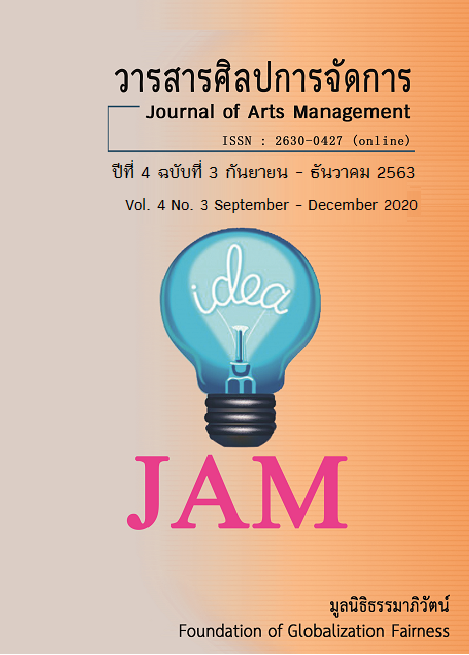Risk Management and School Effectiveness under the Secondary Educational Service Area Office 9
Main Article Content
Abstract
The purposes of this study were: 1) to determine the risk management under the Secondary Educational Service Area Office 9; 2) to determine the effectiveness of the school under the Secondary Educational Service Area Office 9; and 3) to determine the relationship between the risk management and school effectiveness under the Secondary Educational Service Area office 9. By specifying samples from the approximate size table of Krecie and Morgan. The sample size of this study was 56 schools. The respondents from each school were; a school director and a teacher who responsible for internal quality assurance, with a total of 112 respondents. The instrument for collecting the data were an opinionnaire. The statistical treatments were frequency, percentage, arithmetic mean, standard deviation, and Pearson's product moment correlation coefficient. The findings of this study were as follows: 1) The risk management under the Secondary Educational Service Area Office 9 as a whole and each aspect were at the highest level; 2) The effectiveness of the school under the Secondary Educational Service Area Office 9 as a whole and each aspect were at the highest level; and 3) There were significant relationship between the risk management and the effectiveness of the school under the Secondary Educational Service Area Office 9 as a whole and each aspect with a statistically significant 0.01 level.
Article Details
Views and opinions appearing in articles in the Journal of Arts of Management It is the responsibility of the author of the article. and does not constitute the view and responsibility of the editorial team I agree that the article is copyright of the Arts and Management Journal.
References
กระทรวงศึกษาธิการ. (2556). คู่มือการบริหารความเสี่ยง. กรุงเทพฯ: กระทรวงศึกษาธิการ.
ธร สุนทรายุทธ. (2550). การบริหารจัดการความเสี่ยงทางการศึกษา. กรุงเทพฯ: บริษัท เนติกุลการพิมพ์ จำกัด.
สำนักงานคณะกรรมการการศึกษาขั้นพื้นฐาน. (2560)ก. คู่มือการปฏิบัติงานสำนักงานเขตพื้นที่การศึกษา หน่วยตรวจสอบภายใน. กรุงเทพฯ: สำนักงานคณะกรรมการการศึกษาขั้นพื้นฐาน กระทรวงศึกษาธิการ.
สำนักงานคณะกรรมการการศึกษาขั้นพื้นฐาน. (2560)ข. การประเมินผลสัมฤทธิ์นักเรียนระดับการศึกษาขั้นพื้นฐาน ปีการศึกษา 2560. กรุงเทพฯ: สำนักงานทดสอบทางการศึกษา.
Best, J. (1981). Research in Education. New Jersey: Prentice Hall, Inc.
Hoy, W., & Miskel, C. (2013). Educational Administration: Theory, Research, and Practice. (9th ed.). New York: McGraw-Hill.
Krejcie, R. V., & Morgan, D. W. (1970). Determining Sample Size for Research Activities. Educational and Psychological Measurement, 30, 607-610.
Likert, R. (1961). New Pattern of Management. New York: McGraw-Hill.
Lunenburg, F. C., & Ornstein, A. C. (2012). Educational Administration: Concepts and Practices. California: Wadsworth Publishing.
Milton, C. R. (1981). Human Behavior in Organization: Three Levels of Behavior. Englewood Cliffs, New Jersey: Prentice Hall, Inc.
Worley, C. G., & Lawler, E. E. (2006). Designing Organizations That Are Built to Change. MIT Sloan Management Review, 48(1), 19-23.


